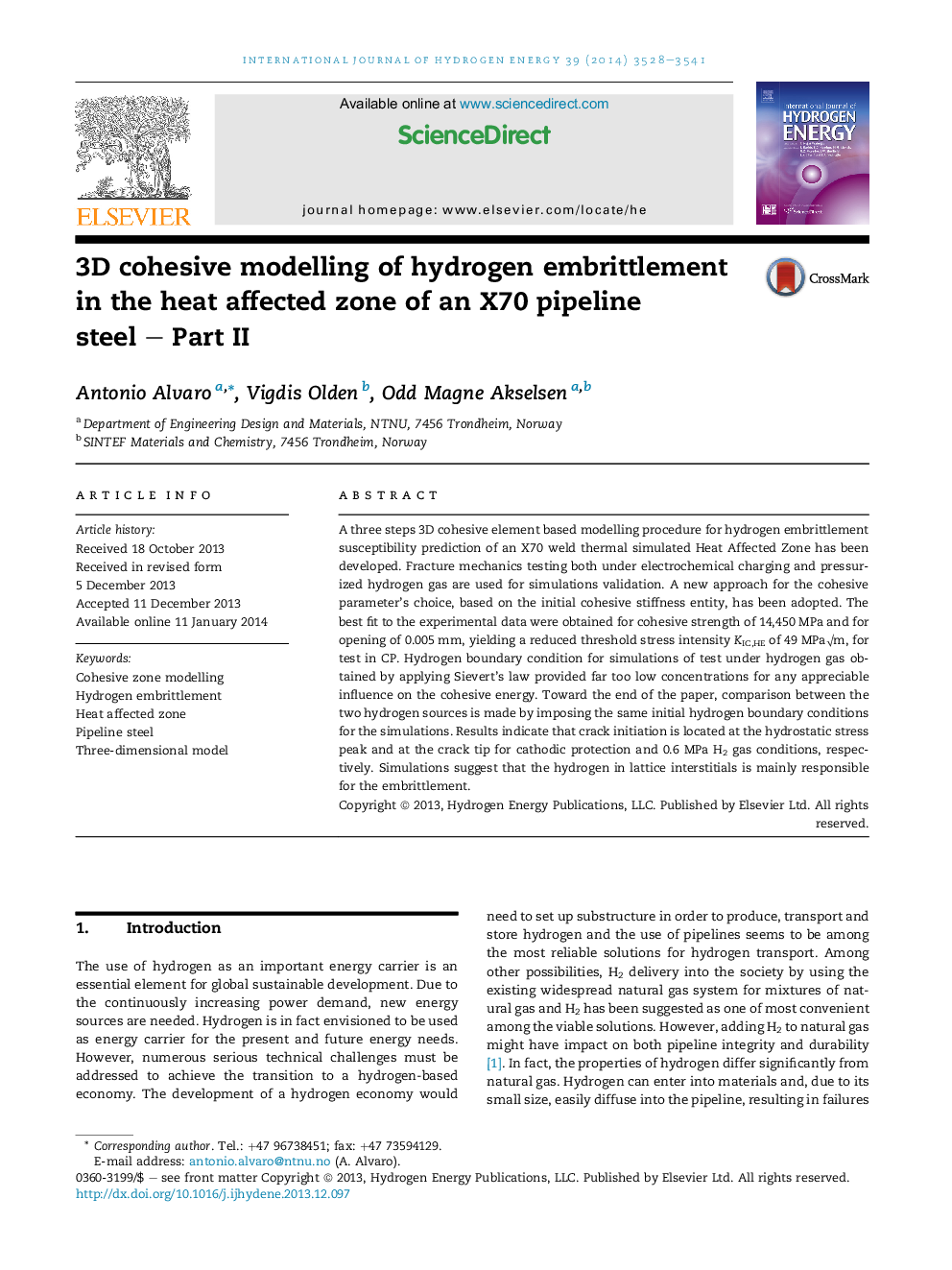| کد مقاله | کد نشریه | سال انتشار | مقاله انگلیسی | نسخه تمام متن |
|---|---|---|---|---|
| 1270658 | 1497502 | 2014 | 14 صفحه PDF | دانلود رایگان |

• A 3D FE cohesive model of hydrogen embrittlement in the HAZ of an X70 steel is proposed.
• Simulations are validated to SENT fracture mechanics testing both in CP conditions and H2 gas.
• Cohesive parameters were chosen based on the initial cohesive stiffness value.
• Sievert's law was unsuitable to determine initial hydrogen related boundary conditions.
• The simulations indicated crack initiation to be located at the hydrostatic stress peak.
A three steps 3D cohesive element based modelling procedure for hydrogen embrittlement susceptibility prediction of an X70 weld thermal simulated Heat Affected Zone has been developed. Fracture mechanics testing both under electrochemical charging and pressurized hydrogen gas are used for simulations validation. A new approach for the cohesive parameter's choice, based on the initial cohesive stiffness entity, has been adopted. The best fit to the experimental data were obtained for cohesive strength of 14,450 MPa and for opening of 0.005 mm, yielding a reduced threshold stress intensity KIC,HE of 49 MPa√m, for test in CP. Hydrogen boundary condition for simulations of test under hydrogen gas obtained by applying Sievert's law provided far too low concentrations for any appreciable influence on the cohesive energy. Toward the end of the paper, comparison between the two hydrogen sources is made by imposing the same initial hydrogen boundary conditions for the simulations. Results indicate that crack initiation is located at the hydrostatic stress peak and at the crack tip for cathodic protection and 0.6 MPa H2 gas conditions, respectively. Simulations suggest that the hydrogen in lattice interstitials is mainly responsible for the embrittlement.
Journal: International Journal of Hydrogen Energy - Volume 39, Issue 7, 25 February 2014, Pages 3528–3541